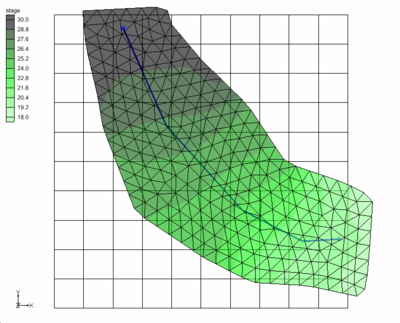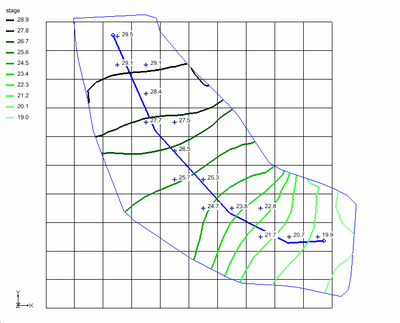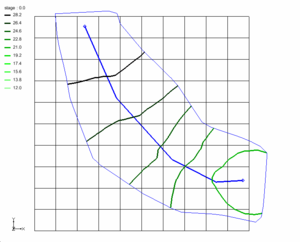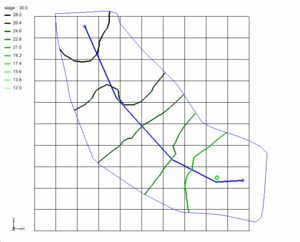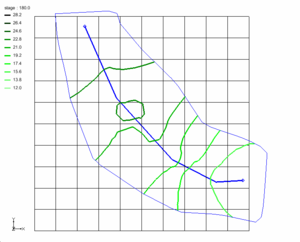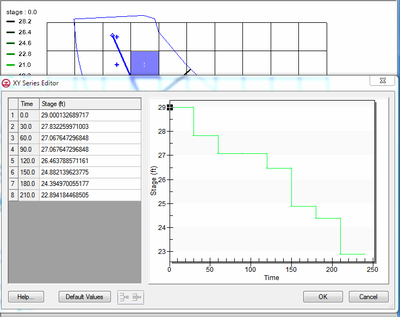GMS:Map to MODFLOW with TINs: Difference between revisions
From XMS Wiki
Jump to navigationJump to search
No edit summary |
No edit summary |
||
| Line 4: | Line 4: | ||
When the arc is discretized onto the model grid, the boundary condition property will be interpolated from the TIN. | When the arc is discretized onto the model grid, the boundary condition property will be interpolated from the TIN. | ||
[[Image:TinModflow2.png|400px|TIN assigned to river stage.]] | [[Image:TinModflow2.png|400px|TIN assigned to river stage.]] | ||
Beginning with version 9.1, the user can also assign TINs with transient data sets. This will give users the option to have a surface that changes with time assigned to a boundary condition property. The times associated with the TIN data set can be in date/time format or relative time format. | Beginning with version 9.1, the user can also assign TINs with transient data sets. This will give users the option to have a surface that changes with time assigned to a boundary condition property. The times associated with the TIN data set can be in date/time format or relative time format. | ||
| Line 16: | Line 13: | ||
| [[Image:TinModflow4.png|thumb|300px]] | | [[Image:TinModflow4.png|thumb|300px]] | ||
| [[Image:TinModflow5.png|thumb|300px]] | | [[Image:TinModflow5.png|thumb|300px]] | ||
|} | |||
| | |||
[[Image:TinModflow6.png|400px|Transient TIN assigned to river stage.]] | |||
Revision as of 21:50, 25 February 2013
At times, instead of assigning values at the upstream and downstream ends of the arc, it is useful to assign a property using a surface. This can be done in GMS using a TIN.
When the arc is discretized onto the model grid, the boundary condition property will be interpolated from the TIN.
Beginning with version 9.1, the user can also assign TINs with transient data sets. This will give users the option to have a surface that changes with time assigned to a boundary condition property. The times associated with the TIN data set can be in date/time format or relative time format.
